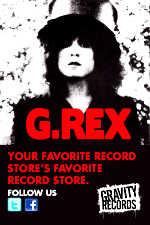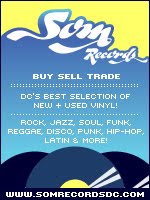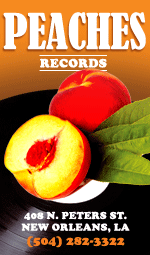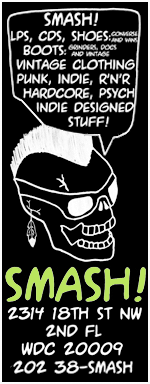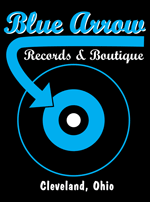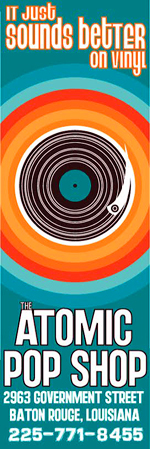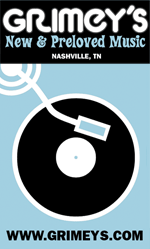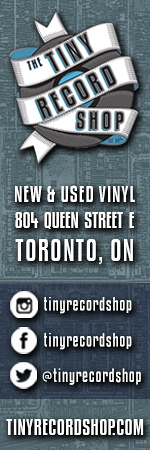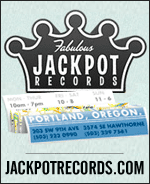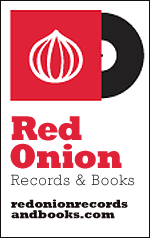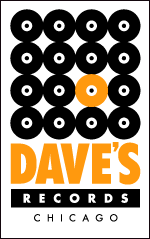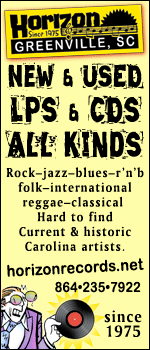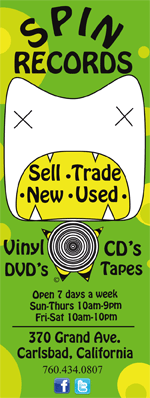
It was Free Comic Day that inspired Record Store Day, the annual celebration for vinyl fans that began in 2007. And what started as a promotion among 100 stores in the US has grown into an international event that not only survived the pandemic but had its biggest year ever last year by splitting its annual Record Store Day drops into three separate days to keep the crowds smaller and distanced.
At a time when the vinyl version of Taylor Swift’s six month old Evermore album took her back to No. 1 (from No. 74) this month, we talked to event co-creator Michael Kurtz in the lull between this summer’s two events, June 12 and July 17.

What have you heard about the success of this year’s first Record Store Day June 12?
The reports I’ve seen is that, with the second one, it should actually surpass the success of last year’s event.
How do you measure that?
Breaking all records for selling the most vinyl at independent retail. And the only barometer for that is MRC Data for Billboard, which we know is not perfect, but it definitely gives you a clear indication and we heard from the store owners themselves that the data supports.
How did last year become such a big year despite the pandemic?
We did a lot of work in advance for the three drops we did last year—Zoom calls with record store owners, lots of email discussions about how to morph and allow stores to operate. If they had no restrictions they could sell as normal, but if there was a lot of restrictions, and mandates for mask wearing and social distancing, then they would benefit by splitting all the release over three days, so we didn’t overwhelm the store with too many people and then we allowed the stores to online at 1 PM eastern time on their store websites to take care of people who were not comfortable shopping. All three of those things enabled it to be just a huge success.
And that’s why this year’s was broken into two dates as well?
Yeah, it’s the same thing.
Do you hope things will be back to normal by Black Friday or next year?
Yeah, we hope so.
What’s the reason there has been an increase in vinyl sales for 15 consecutive years?
I think it’s because the vinyl format has been adopted by whatever the youngest two generations talk about in marketing terms. For people that are less than 38 years old, vinyl is their format. They completely adopted it. The majority of people who shop in record stores now are female and the average age is 28. So they’ve taken it over. That’s why you also see the top sellers are Lady Gaga, Haim, Ariana Grande, that kind of thing, because it’s that next generation.
Many people thought it was nostalgia and old collectors buying classic rock that was fueling the resurgence.
That was true at the beginning. And there’s still a lot of people who love that kind of thing. But you have to keep in mind, people like Elton John and Tom Petty, young people really love those artists as much as older music fans. So it’s kind of split now.
Did it take a while for majors to get back on board with vinyl?
When we started [Record Store Day] in 2007 Warner Music was the only major that was interested at the time. Then Sony came on next and Universal was the laggard because the higher ups really just didn’t see it. But now they’re on board too.
And in the beginning, only the Beggars Group [home to 4AD, Matador, Rough Trade, and XL among others] as far as the indies, were involved with Record Store Day. Independent labels really didn’t come on board until four or five years later, and the reason for that was, it was expensive to do, and we really had to prove to them that if you make 1,000 or 2,000 or 5,000 copies of something that it’s going to sell to sell to these stores, and it’s not coming back. None of it is returnable. They’re good business people, so they had to be very careful, because there wasn’t really any vinyl business to speak of in 2008-2012. It was very minimal.
So we had to do things like put a Record Store Day on site at Coachella, to really drive home the point that people, once they discover vinyl, fall in love with it. That’s how we connected with a lot of independent artists at the time, because they all did signings at the tent, at the store. That’s the evolution of it.
Was it because top-selling artists insisted their new releases come out on vinyl that the majors changed?
That’s definitely true. It’s true even now, for the most part. That hasn’t changed.
Looking forward to the July 17 Record Store Day, what are some of the highlights of the drops?
We’ve got 125 to 150 titles as opposed to a little over 200 [in June]. So it’s a smaller amount, but we just announced that the Foo Fighters will be releasing an album they call Hail Satin. There’s one side of them covering the Bee Gees, and the other side is live. It’s a completely unique album to support record stores. It’s going to have a limited run of 12,000. That’s going to be a big buzz item.
What’s the breakdown of things that are absolutely unique to Record Store Day compared to things that are released for the first time but will be available later?
I would say probably 60 percent totally unique, 40 percent what we call window titles that are only available for a certain window of time.

Some fans complain that some of the most wanted titles that disappear quickly on Record Store Day are found online the following day for wildly inflated prices.
We live in a world where people do that with sneakers, with concert tickets. There’s nothing that can be done. It’s the human condition. People are going to do that. It’s not the stores doing it. If we find a store that’s doing it, we will disinvite them from participating, because it’s just not cool. You usually find two or three stores every Record Store Day that does something like that. And you have to say, “OK, you’re gonna leave now. We’re not going to do this with you any more.”
But yeah, it’s just the way it is. And the reality of it is that more and more people are learning that there’s no need to buy it the next day. They’re readily available in most cases for close to what it sold for at the stores within three or four days. It all just settles down.
How many stores are involved in Record Store Day now?
Approximately 1,400—and about 3,000 worldwide.
Is the independent record store business healthy right now?
It’s bustling. It’s very healthy right now.
It seems like CDs are being replaced by vinyl in the big box stores the way CDs once replaced vinyl.
Yeah, this is another major label, major corporation fiasco. It’s just ridiculous. At least 50 percent of music fans want CDs, but the majors just don’t want to be bothered with it. I hate to put it this way, but they’re kind of whoring out vinyl to the mass merchants to get them on board, and it’s really not good. Last year, we saw Walmart with their $1 vinyl sale, then we saw Target with their buy one, get one free. And this is a nonreturnable product for record stores, who knows what the big boxes have worked out. But it’s just a classic thing with corporations just whoring out vinyl now. And they’ll ruin it at some point, but I don’t think they can completely destroy that business the way they did with CDs.
CDs, there’s a lot of demand for them. People love CDs. But the majors just don’t want to make it, by and large. I mean, there are particular bands that force them to do it, because they know their fan base wants it. Like Foo Fighters in a famous story last year sold all 50,000 of the CDs in the first week of the release of their new album—and would have sold more, but they sold everything that they made. They would have sold more. But it’s just life in the corporate world. There’s an upside to it, but the downside is there’s a lot of short-term thinking.
But streaming is still the most popular way of receiving music today?
Yeah, if you believe what Billboard says. For me, and I have my doubts. For me in my life, it’s probably 50/50 for us, you know. We use the turntable a lot, the CD some; streaming is in the car. But everybody’s different.
They say that they’re rolling in the dough, that they’re making more money than ever. But I don’t see any evidence of it when it comes to more people working for the company, or more marketing for music—it’s all been outsourced. I’m befuddled by what’s going on. I don’t really know.
It seems like the ease of streaming has devalued music for the consumer.
Yeah. The biggest records last year—Megan Thee Stallion, the Cardi Bs, all that stuff, the record label didn’t even make the physical stuff. So the fan didn’t have the choice. In the case of Megan Thee Stallion, we were able to buy one way, I forget what we did—10,000 CDs or something like that. But if we hadn’t done that, they wouldn’t even have made those. In the cases of some of the top artists, like Drake, they don’t even make physical goods. So the music fan just has no choice.
The return of Taylor Swift’s Evermore to No. 1 was based on the release in May of the vinyl version—five months of orders were counted the week they got fulfilled. She also encouraged fans to visit stores to get autographed copies and created excitement about vinyl.
There’s a reason Republic, her label, is the No. 1 record label in the world. That label is a music company. It’s run by two brothers who are music people and are top to bottom obsessed with music. And I’m sure that’s why they signed with them. And you see it in everything they do. They don’t give up on artists and they don’t treat the fans like shit. They make sure they have the options to buy the album and support the artist however they like. They’re very exceptional in that sense. There’s nobody like them, really.
Will we see more No. 1 sales based on vinyl sales?
It’s hard to say, because here in the US the way that MRC Data measures consumption is completely skewed. They treat an album as if it’s a $10 CD across the board. So, just making this up, if there’s a deluxe version of Rammstein’s latest album that’s a $100 boxed set, the way MRC Data registers that sale as if it’s a $10 CD. In Europe, they register based on the dollar amount. That completely skews the whole view of physical sales, because it minimizes it. You could spend a billion dollars on physical goods and it would show up as a fraction of what consumption online is, because the numbers are way over inflated, even though the value to the artist is very, very small, something like .006 cents or something that they get paid per stream. It’s a very skewed, warped view of music consumption, and not the reality of it. And I’ve talked to them about it: Why don’t you do what they do in Europe, and they really don’t have an answer.
What’s worse is all the independent labels are not included in streaming services’ top tier playlist, because there’s a relationship between the streaming services and the majors, so almost everything you see there is a major label because that’s the way the money flows. It just makes sense, business-wise to do that. So all the independent labels with a few exceptions are shutout. They’re already at a great disadvantage.
So what we try to say is if a great independent artist puts out a record, say Ty Segall, and the record stores buy 5,000 copies of it, collectively, they pay for it up front. It’s cash and you cannot return it. Those are the rules of the game. So in effect it’s bought, whether it gets resold or not doesn’t matter. But that artist doesn’t appear on the charts anywhere, even though there’s a bigger transaction there compared to some artist on a major label that’s on streaming services. That artist will chart on the Billboard charts way higher, even though the dollar amount that’s going to them is significantly lower. But that’s the warped system we’re in right now.
But it didn’t used to be that way right? There were returns and cut-outs once.
No, this was all created to move everything to streaming. I don’t blame anybody for trying to grow their business and manage it however they want. But all of it was done, in my mind, to the detriment of the artist and the record stores and music fans who want to buy physical goods. Because all it creates is the warped view that nobody really wants it, because it never appears on the charts or anything. Even those artists are doing well. It’s a very strange situation that we’re in.

Do you feel you’re part of changing that, by encouraging vinyl sales and helping independent record stores?
I’ve spent a decade on this, but to be honest with you, it’s had no effects on the charts. With the exception of the Taylor Swift model, all the artists that we sell 5,000 to 10,000 copies of, physically, which don’t do much streaming—they don’t get charted at all. The system is completely skewed. And one of the tragedies of it is you can see artists don’t develop now. I’m talking about true artists, musicians, composers, who play live, the whole package. Those artists are greatly diminished. If you’re a producer making music on your computer, and you’re signed to a major, you are doing great. This system is fantastic for you. That’s the reality of it. We tried to talk to the services that do the sales data, but they were not receptive.
That’s just the charts, though. You’ve helped raise awareness of artists and vinyl itself with this promotion.
Oh yes. That’s the big positive. Collectively, the two Record Store Day drops, we’ll probably sell 700,000 albums. And that is exactly what you said: it’s a beautiful celebration. It’s really great. Does it have an impact beyond that? No. Because the system is not interested in what we’re doing. So we’re really under the radar. It’s back to the ’60s or ’70s again where there were cool record stores that sold Ziggy Stardust, and nobody else cared about it outside of that. That’s kind of back where we are.
At least some artists are making a living this way, whether or not they’re making the charts.
They are making it. But what I tell the data companies is: you’re really doing a disservice, because if you show the value of their fans consuming their music, that would get them placements on tours, it would give them more sponsorship opportunities. All that kind of stuff adds to the bottom line. But you’re not going to let that happen. So it’s good, but it’s not. It’s a weird place to be.
It seems like you would be more upbeat, with vinyl is on the uprise, and kids are digging it…
Yeah, we’re going to do fantastic. But I hate that record stores are always disenfranchised. We really blew this up and became the center of vinyl. But you can feel it, we’re getting more and disenfranchised and relegated to a special tent—“Oh, records? It’s just this event.” That’s cool. I’m glad. But it’s not the same as supporting community businesses day in and day out, which is really what they need.
We did a big initiative to help Black-owned record stores this year—there’s only 32 left; there used to be hundreds. But it’s because they got so disenfranchised. We reached out to them and they were like, “Nobody’s called us in over a decade, from the labels to the music business. We’re on our own.” And I’m trying to help them.
But it’s because of this system that I just described disenfranchised everyone who is not a big streaming company. It’s hard to be upbeat about that. As far as Record Store Day goes, it’s a really cool thing. It’s a fun party and we can’t wait to get back to normal. You know, we used to have 600 artists appear in record stores on a typical Record Store Day. We had to trim all of this back.
Did you have any live performances this year?
A few. We had Richard Hell in New York, Groundhogs in Seattle. Maybe five or six other ones. But we’re just limping our way back into that. Nobody’s ready for it yet.















